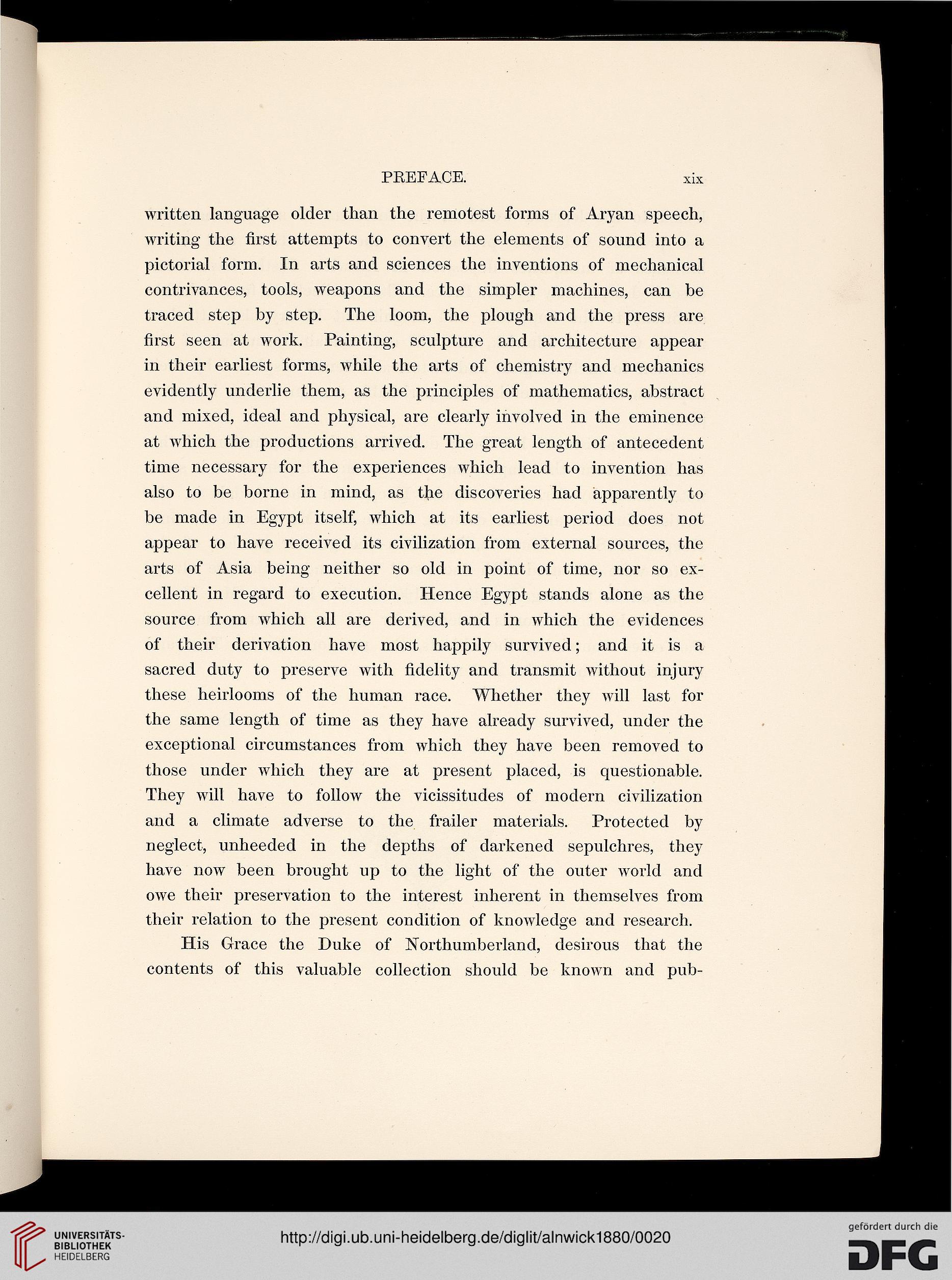PEEFACE.
xix
written language older than the remotest forms of Aryan speech,
writing the first attempts to convert the elements of sound into a
pictorial form. In arts and sciences the inventions of mechanical
contrivances, tools, weapons and the simpler machines, can be
traced step by step. The loom, the plough and the press are
first seen at work. Painting, sculpture and architecture appear
in their earliest forms, while the arts of chemistry and mechanics
evidently underlie them, as the principles of mathematics, abstract
and mixed, ideal and physical, are clearly involved in the eminence
at which the productions arrived. The great length of antecedent
time necessary for the experiences which lead to invention has
also to be borne in mind, as the discoveries had apparently to
be made in Egypt itself, which at its earliest period does not
appear to have received its civilization from external sources, the
arts of Asia being neither so old in point of time, nor so ex-
cellent in regard to execution. Hence Egypt stands alone as the
source from which all are derived, and in which the evidences
of their derivation have most happily survived; and it is a
sacred duty to preserve with fidelity and transmit without injury
these heirlooms of the human race. Whether they will last for
the same length of time as they have already survived, under the
exceptional circumstances from which they have been removed to
those under which they are at present placed, is questionable.
They will have to follow the vicissitudes of modern civilization
and a climate adverse to the frailer materials. Protected by
neglect, unheeded in the depths of darkened sepulchres, they
have now been brought up to the light of the outer world and
owe their preservation to the interest inherent in themselves from
their relation to the present condition of knowledge and research.
His Grace the Duke of Northumberland, desirous that the
contents of this valuable collection should be known and pub-
xix
written language older than the remotest forms of Aryan speech,
writing the first attempts to convert the elements of sound into a
pictorial form. In arts and sciences the inventions of mechanical
contrivances, tools, weapons and the simpler machines, can be
traced step by step. The loom, the plough and the press are
first seen at work. Painting, sculpture and architecture appear
in their earliest forms, while the arts of chemistry and mechanics
evidently underlie them, as the principles of mathematics, abstract
and mixed, ideal and physical, are clearly involved in the eminence
at which the productions arrived. The great length of antecedent
time necessary for the experiences which lead to invention has
also to be borne in mind, as the discoveries had apparently to
be made in Egypt itself, which at its earliest period does not
appear to have received its civilization from external sources, the
arts of Asia being neither so old in point of time, nor so ex-
cellent in regard to execution. Hence Egypt stands alone as the
source from which all are derived, and in which the evidences
of their derivation have most happily survived; and it is a
sacred duty to preserve with fidelity and transmit without injury
these heirlooms of the human race. Whether they will last for
the same length of time as they have already survived, under the
exceptional circumstances from which they have been removed to
those under which they are at present placed, is questionable.
They will have to follow the vicissitudes of modern civilization
and a climate adverse to the frailer materials. Protected by
neglect, unheeded in the depths of darkened sepulchres, they
have now been brought up to the light of the outer world and
owe their preservation to the interest inherent in themselves from
their relation to the present condition of knowledge and research.
His Grace the Duke of Northumberland, desirous that the
contents of this valuable collection should be known and pub-




